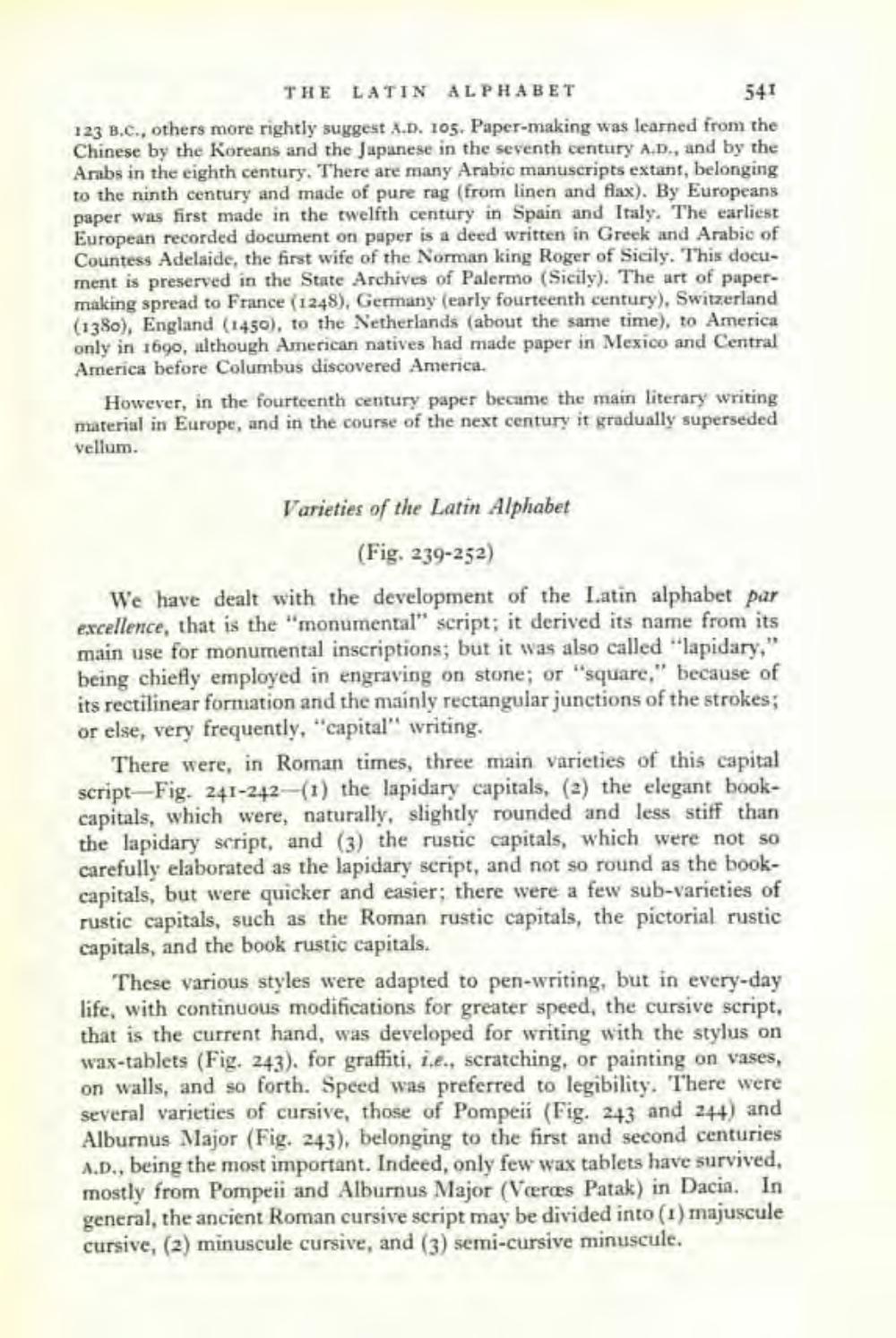________________
THE LATIN ALPHABET
541 123 B.C., others more rightly suggest A.D. 105. Paper-making was learned from the Chinese by the Koreans and the Japanese in the seventh century A.D., and by the Arabs in the eighth century. There are many Arabic manuscripts extant, belonging to the ninth century and made of pure rag (from linen and flax). By Europeans paper was first made in the twelfth century in Spain and Italy. The earliest European recorded document on paper is a deed written in Greek and Arabic of Countess Adelaide, the first wife of the Norman king Roger of Sicily. This document is preserved in the State Archives of Palermo (Sicily). The art of papermaking spread to France (1248), Germany (early fourteenth century), Switzerland (1380), England (1450), to the Netherlands (about the same time), to America only in 1690, although American natives had made paper in Mexico and Central America before Columbus discovered America.
However, in the fourteenth century paper became the main literary writing material in Europe, and in the course of the next century it gradually superseded vellum.
Varieties of the Latin Alphabet
(Fig. 239-252) We have dealt with the development of the Latin alphabet par excellence, that is the "monumental" script; it derived its name from its main use for monumental inscriptions; but it was also called "lapidary," being chiefly employed in engraving on stone; or "square," because of its rectilinear formation and the mainly rectangular junctions of the strokes; or else, very frequently, "capital" writing.
There were, in Roman times, three main varieties of this capital script-Fig. 241-242-(1) the lapidary capitals, (2) the elegant bookcapitals, which were, naturally, slightly rounded and less stiff than the lapidary script, and (3) the rustic capitals, which were not so carefully elaborated as the lapidary script, and not so round as the bookcapitals, but were quicker and easier; there were a few sub-varieties of rustic capitals, such as the Roman rustic capitals, the pictorial rustic capitals, and the book rustic capitals.
These various styles were adapted to pen-writing, but in every-day life, with continuous modifications for greater speed, the cursive script, that is the current hand, was developed for writing with the stylus on was-tablets (Fig. 243), for graffiti, i.e., scratching, or painting on vases, on walls, and so forth. Speed was preferred to legibility. There were several varieties of cursive, those of Pompeii (Fig. 243 and 24) and Alburnus Major (Fig. 243), belonging to the first and second centuries A.D., being the most important. Indeed, only few wax tablets have survived, mostly from Pompeii and Alburnus Major (Veres Patak) in Dacin. In general, the ancient Roman cursive script may be divided into (1) majuscule cursive, (2) minuscule cursive, and (3) semi-cursive minuscule.




